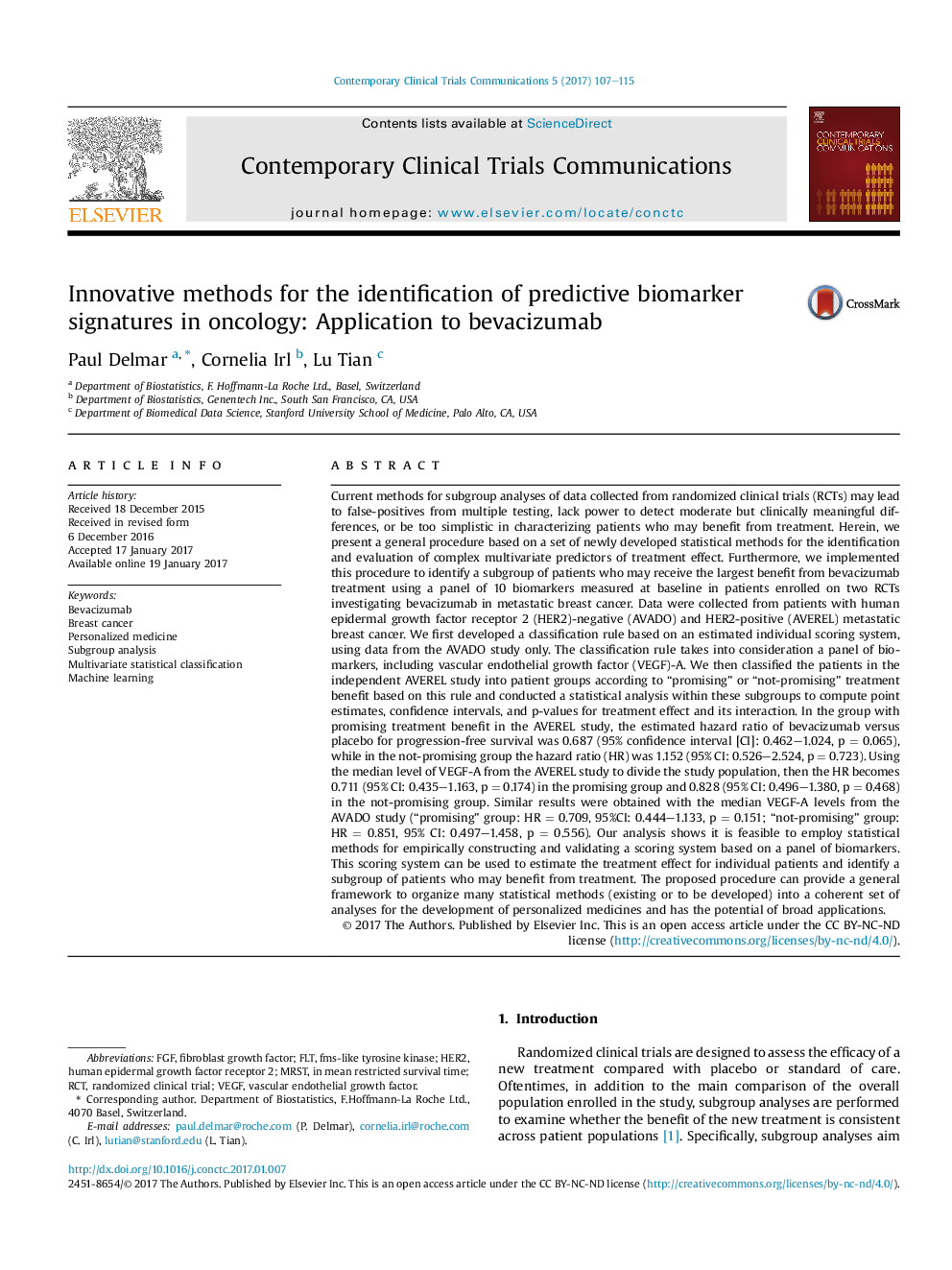| کد مقاله | کد نشریه | سال انتشار | مقاله انگلیسی | نسخه تمام متن |
|---|---|---|---|---|
| 5549654 | 1556792 | 2017 | 9 صفحه PDF | دانلود رایگان |
Current methods for subgroup analyses of data collected from randomized clinical trials (RCTs) may lead to false-positives from multiple testing, lack power to detect moderate but clinically meaningful differences, or be too simplistic in characterizing patients who may benefit from treatment. Herein, we present a general procedure based on a set of newly developed statistical methods for the identification and evaluation of complex multivariate predictors of treatment effect. Furthermore, we implemented this procedure to identify a subgroup of patients who may receive the largest benefit from bevacizumab treatment using a panel of 10 biomarkers measured at baseline in patients enrolled on two RCTs investigating bevacizumab in metastatic breast cancer. Data were collected from patients with human epidermal growth factor receptor 2 (HER2)-negative (AVADO) and HER2-positive (AVEREL) metastatic breast cancer. We first developed a classification rule based on an estimated individual scoring system, using data from the AVADO study only. The classification rule takes into consideration a panel of biomarkers, including vascular endothelial growth factor (VEGF)-A. We then classified the patients in the independent AVEREL study into patient groups according to “promising” or “not-promising” treatment benefit based on this rule and conducted a statistical analysis within these subgroups to compute point estimates, confidence intervals, and p-values for treatment effect and its interaction. In the group with promising treatment benefit in the AVEREL study, the estimated hazard ratio of bevacizumab versus placebo for progression-free survival was 0.687 (95% confidence interval [CI]: 0.462-1.024, p = 0.065), while in the not-promising group the hazard ratio (HR) was 1.152 (95% CI: 0.526-2.524, p = 0.723). Using the median level of VEGF-A from the AVEREL study to divide the study population, then the HR becomes 0.711 (95% CI: 0.435-1.163, p = 0.174) in the promising group and 0.828 (95% CI: 0.496-1.380, p = 0.468) in the not-promising group. Similar results were obtained with the median VEGF-A levels from the AVADO study (“promising” group: HR = 0.709, 95%CI: 0.444-1.133, p = 0.151; “not-promising” group: HR = 0.851, 95% CI: 0.497-1.458, p = 0.556). Our analysis shows it is feasible to employ statistical methods for empirically constructing and validating a scoring system based on a panel of biomarkers. This scoring system can be used to estimate the treatment effect for individual patients and identify a subgroup of patients who may benefit from treatment. The proposed procedure can provide a general framework to organize many statistical methods (existing or to be developed) into a coherent set of analyses for the development of personalized medicines and has the potential of broad applications.
Journal: Contemporary Clinical Trials Communications - Volume 5, March 2017, Pages 107-115
